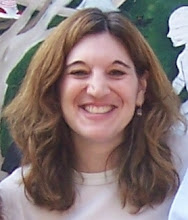I know how it begins. “Every Who down in Whoville liked Christmas a lot, but the Grinch, who lived just north of Whoville, did not.”
I know this Scrooge-like, green fellow will try to stop Christmas from coming.
I know he’s going to show up on TV every year, and get his “wonderful, awful idea.” He’ll disguise his dog Max as a reindeer and suit up as “Santie Claus.” He’ll steal everything from all the Who houses, even the Who hash.
I know every clever Seuss rhyme, every flawless inflection of Boris Karloff’s narration, every simple yet perfectly story-boarded Chuck Jones’-directed frame.
Yet I watch it again.
I grew up a cultural Jew on New York’s Upper West Side. I was taught by my parents to be mistrustful of organized religion – even our own - because religion can divide as much as it can unite. But I also went to a Quaker school where tolerance was taught. The holiday lights of Manhattan were hard to resist, whether on Hanukah menorahs or the Rockefeller Center tree. As a child no bigger than Cindy Lou Who, I reveled in watching the Grinch take his triumphant ride down Mount Crumpet.
The story analyst in me gets why “The Grinch” is so damned effective (and far better than the movie-length, live action version). There’s the brilliant use of language, whimsical humor, Seuss-inspired animated world. But what makes it resonate is the Grinch’s character arc. What could be better than to see a character whose heart is two sizes too small, believably grow that heart three sizes, and find the strength of ten Grinches, plus two?
Each time I watch – now with my own kids, Thing 1 and Thing 2 - I am as a child, struck anew with hope. People can change. Even Grinches.






